Understanding the Stakes: Foot and Ankle Injuries in Athletics
Foot and ankle injuries are a prevalent and challenging hurdle for athletes, affecting performance and long-term health. From sprains to stress fractures, these injuries can stem from a variety of sports involving running, jumping, and rapid directional changes. Proper prevention and recovery practices are essential to safeguard athletic ability and ensure a safe return to sport. This article explores common injuries, how to prevent them, and the most effective recovery protocols based on the latest expert guidelines.
Common Sports Injuries Affecting the Foot and Ankle
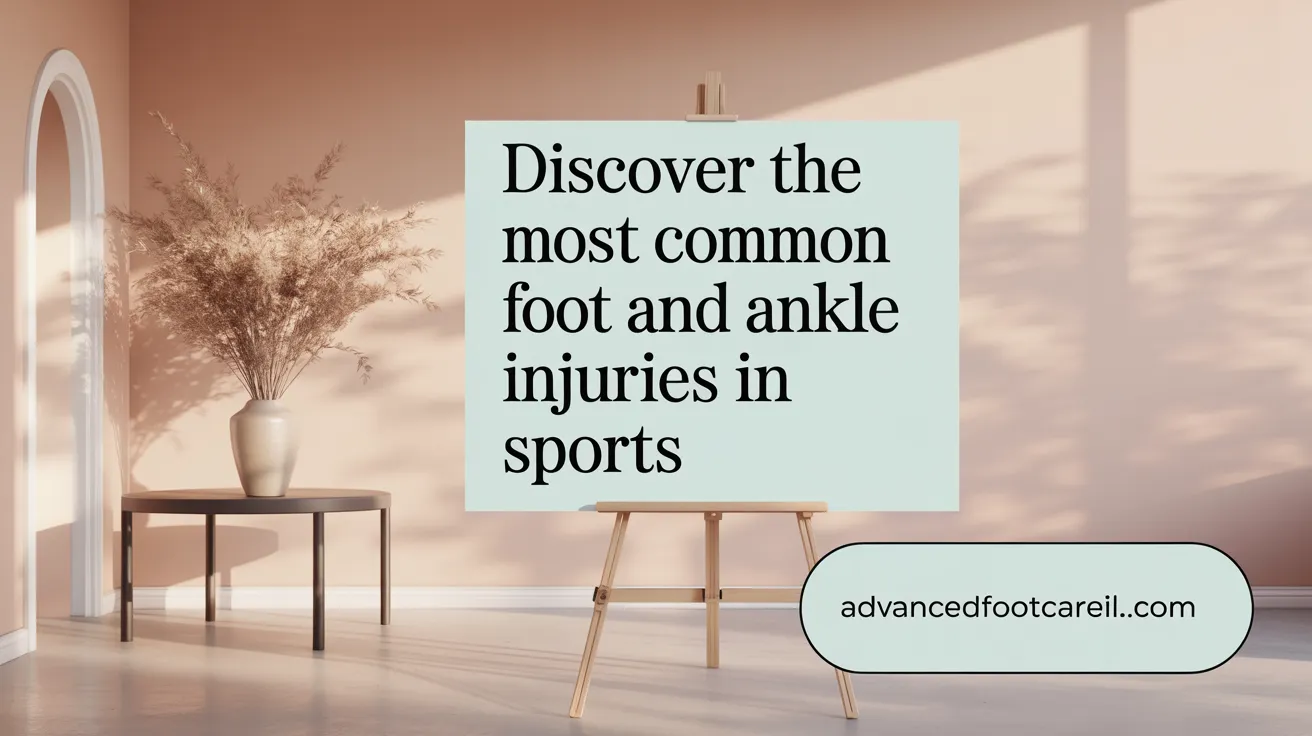
What are the most common foot and ankle injuries in sports?
Athletes frequently encounter several types of foot and ankle injuries. The most prevalent include ankle sprains, particularly lateral ankle sprains caused by inward twisting of the foot. Achilles tendon injuries, such as tendinitis and ruptures, are also common, especially in sports requiring rapid acceleration or jumping. Plantar fasciitis, an overuse injury causing inflammation of the tissue supporting the foot arch, often leads to heel pain. Stress fractures frequently affect bones like the navicular and the metatarsals due to repetitive impact forces. Additionally, turf toe, a sprain of the big toe joint, and fractures such as Jones fractures involving the fifth metatarsal, are notable injuries occurring in athletes.
What symptoms typically present with these injuries?
Symptoms vary based on injury type and severity but generally include localized pain and swelling around the foot or ankle. Bruising and tenderness are common, accompanied by restricted motion and difficulty bearing weight. Severe sprains or fractures might present with deformity or a sensation of a "pop" or "snap" at the time of injury. Overuse conditions like plantar fasciitis prominently cause heel pain, which is often worse in the morning or after periods of rest. For detailed symptom descriptions, see Common sports-related foot injuries.
Which sports have higher incidences of foot and ankle injuries?
Certain sports carry a higher risk of foot and ankle injuries due to their physical demands. Running, soccer, tennis, basketball, football, gymnastics, and dance are among the highest risk activities. These sports involve frequent jumping, rapid changes of direction, and often body contact, all of which challenge foot and ankle stability. Additionally, sports played on artificial surfaces can increase risk factors for injuries like turf toe due to shoe-to-surface interaction. Understanding these risks aids in applying injury prevention strategies tailored to sport-specific demands.
This understanding of common injury types, symptoms, and high-risk sports helps athletes, coaches, and health professionals focus preventive measures and interventions effectively.
Preventing Foot and Ankle Injuries in Athletic Activities
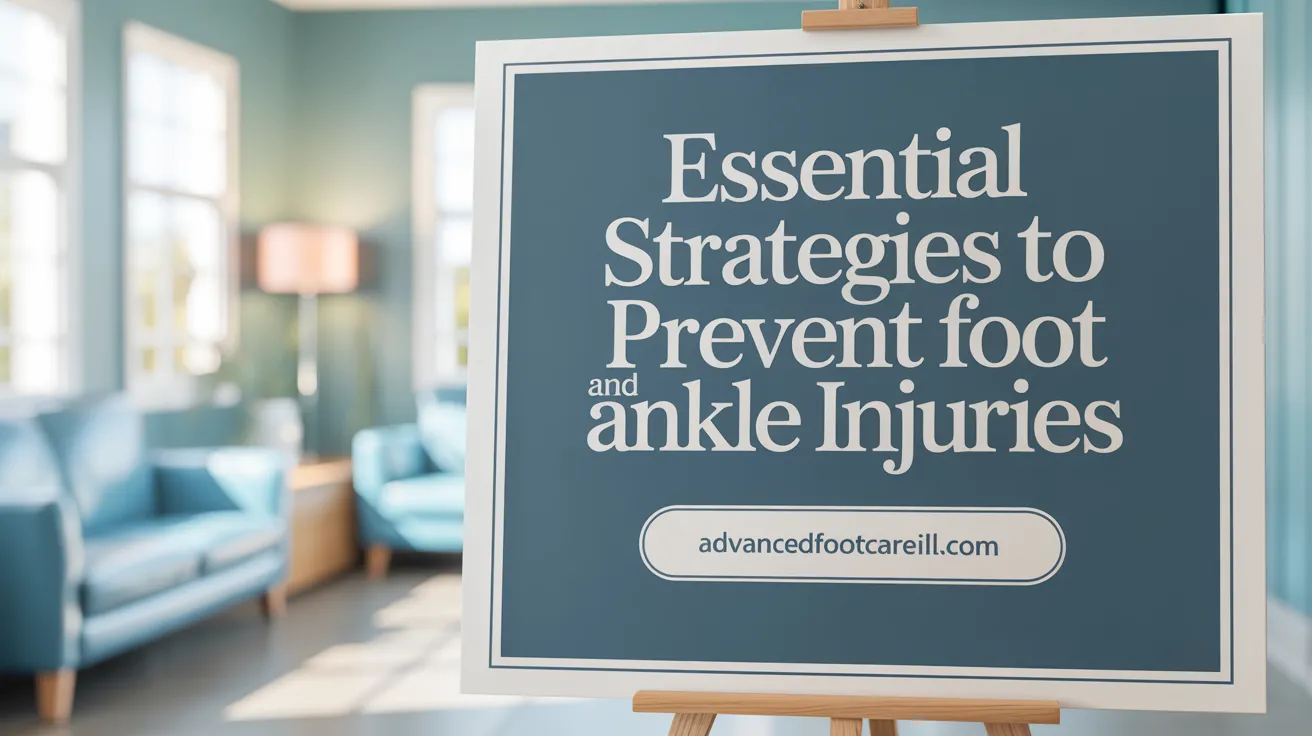
Warm-up and stretching importance
Proper warm-up before engaging in sports is crucial. Light jogging for 2-3 minutes combined with gentle stretching prepares muscles, ligaments, and tendons in the foot and ankle for activity. This reduces stiffness and improves flexibility, which lowers the risk of injuries such as ankle sprains and Achilles tendonitis (Warm-up exercises for injury prevention, Stretching to reduce Achilles and ankle sprains).
Choosing proper footwear
Selecting athletic shoes tailored to an individual’s foot type is essential. Shoes should provide adequate support for pronation or cushioning for high arches. Regular replacement of worn-out shoes, especially when tread or heel cushioning fades, helps maintain proper stabilization and reduces injury risk (Choosing the right athletic shoes, Proper footwear for sports injury prevention.
Avoiding risky terrain and overuse
Athletes should avoid running or exercising on uneven surfaces like rocky terrains, loose gravel, or steep hills without gradual buildup. Such environments increase the chance of trips, twists, and overuse injuries. Gradually increasing activity intensity and including cross-training can build muscle strength and improve mobility (Avoiding uneven running surfaces, Cross-training benefits for foot health, Gradually building up hill running).
Use of braces or tape
For athletes with a history of ankle injuries, using braces or athletic taping offers added joint stability and prevents recurrent sprains. These supports provide proprioceptive feedback and mechanical protection during activities involving quick direction changes or uneven footing (Using braces and tape for ankle support, Taping and bracing for ankle injuries).
Listening to pain signals
One of the most important prevention strategies is to listen to the body. Athletes should stop or modify activity when experiencing foot or ankle pain to prevent worsening of injuries. Early attention to symptoms helps in timely treatment and better recovery outcomes (Listening to your body to prevent injuries, Recognizing early foot and ankle injury symptoms.
| Prevention Strategy | Description | Benefits |
|---|---|---|
| Warm-up and stretching | Light jogging, gentle stretching | Improves flexibility, reduces injury risk (Warm-up exercises for injury prevention |
| Proper footwear | Tailored shoes with support and cushioning | Enhances stability, prevents overuse injuries (Choosing proper athletic footwear |
| Avoiding risky terrain | Steer clear of uneven/rocky surfaces, gradual hill running | Reduces falls, sprains, and overuse damage (Avoiding uneven surfaces |
| Braces or tape | External supports for previously injured ankles | Prevents recurrence, provides stability (Using braces or tape |
| Listening to pain signals | Stop or modify activity when pain occurs | Avoids worsening injuries (Listening to your body |
Acute Management and Diagnosis of Foot and Ankle Injuries
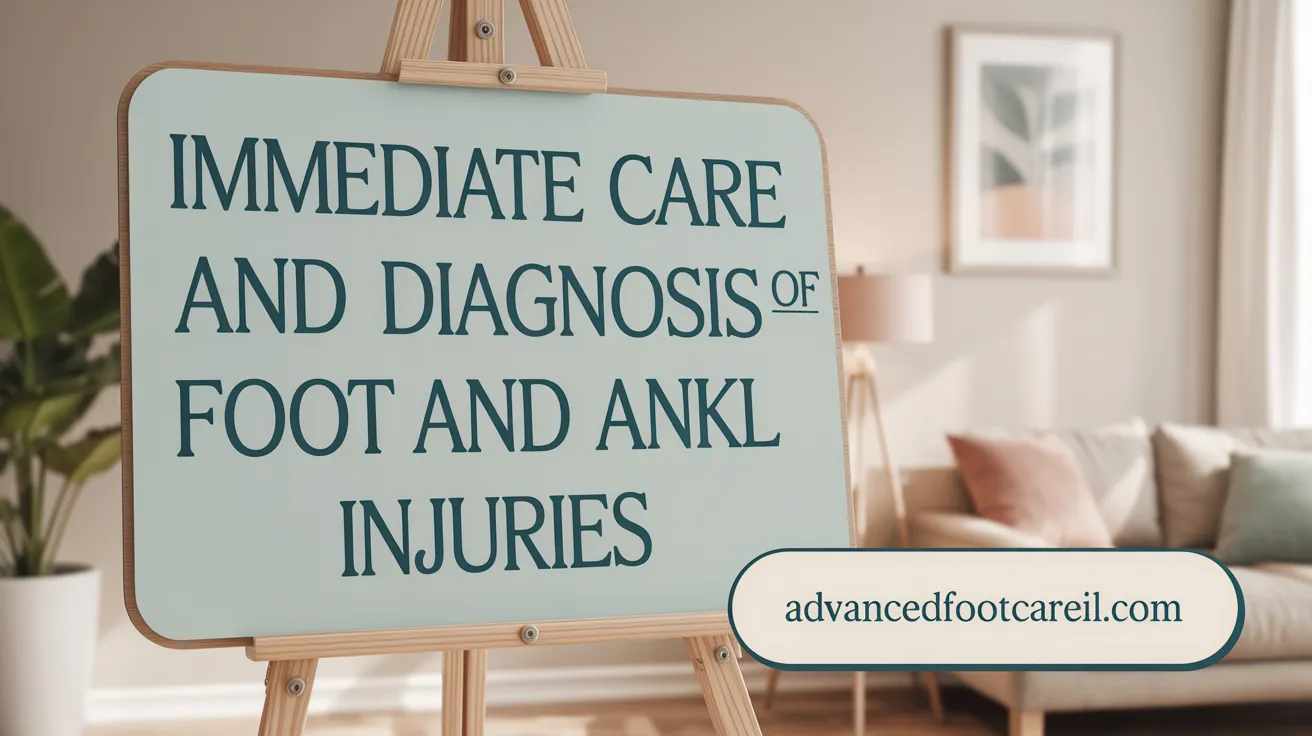
What is the immediate care recommended after a foot or ankle sports injury?
Immediate action following a foot or ankle injury includes stopping activity to avoid further harm. The RICE method—Rest, Ice, Compression, and Elevation—is widely recommended to reduce swelling and pain. Applying ice wrapped in a towel for 15-20 minutes at a time can help control inflammation. Compression with elastic bandages and elevating the injured limb above the heart level further aids recovery. Over-the-counter NSAIDs such as ibuprofen can be used for short-term pain relief.
Which diagnostic tools are used to assess injury severity?
Diagnosis begins with a thorough physical examination to check for tenderness, swelling, and range of motion limitations. Imaging may be needed for accurate assessment. X-rays are typically employed to detect fractures, while MRI scans provide detailed views of soft tissue injuries including ligaments, tendons, and cartilage. CT scans or ultrasound might also be used in specific cases to further evaluate complex injuries or detect stress fractures. For more details, see Diagnosis of sports foot and ankle injuries.
When should a patient seek professional medical evaluation?
Professional medical evaluation is essential when symptoms are severe or worsening. Patients should seek care if they experience intense pain, cannot bear weight on the foot or ankle, or notice deformity or significant swelling. Additional warning signs include persistent numbness, tingling, or instability following the injury. Early diagnosis facilitates tailored treatment and reduces the risk of long-term complications such as chronic pain or joint instability. Find further guidance on When to see a doctor for ankle sprain and Seeking early medical attention for foot injuries.
Rehabilitation and Recovery Strategies for Foot and Ankle Injuries
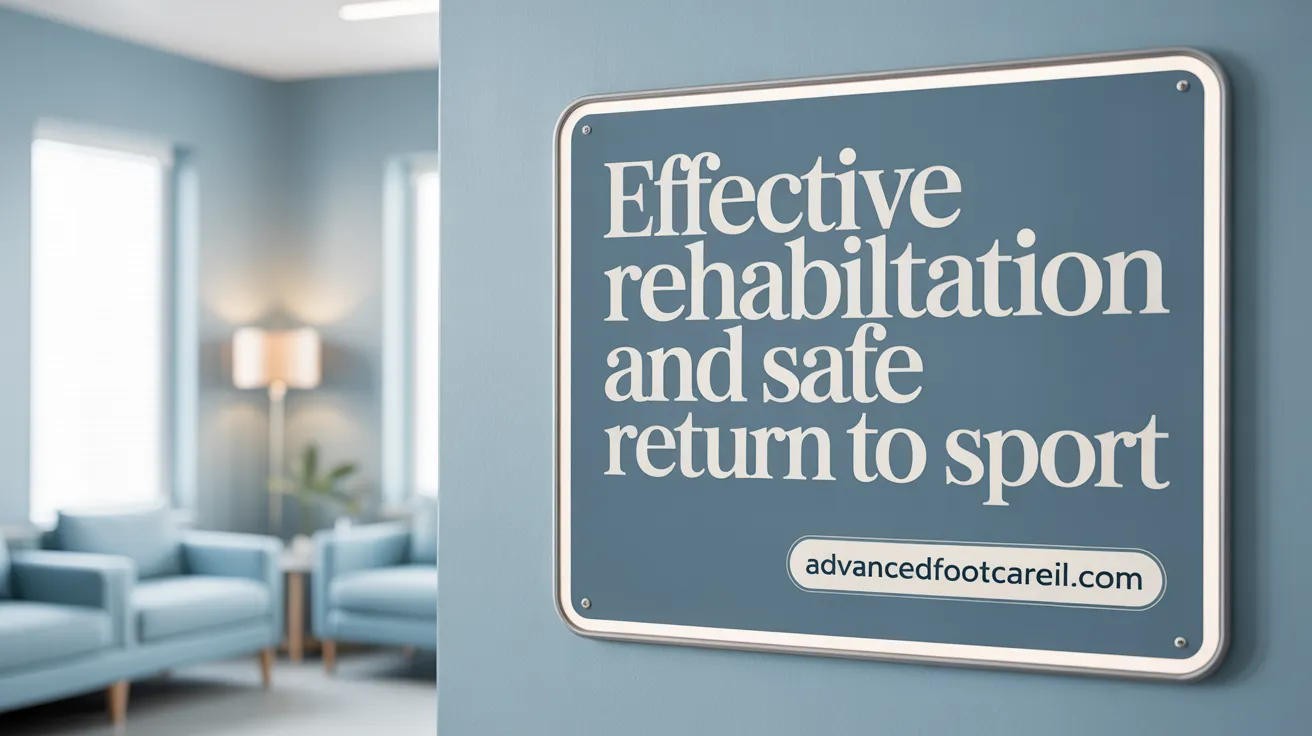
What does effective rehabilitation for foot and ankle injuries entail?
Effective rehabilitation follows a phased approach. Initially, the focus is on controlling acute pain and swelling. This phase is followed by exercises that restore joint range of motion. As healing progresses, strengthening exercises target key muscles such as the calf muscles (gastrocnemius-soleus complex) and the intrinsic muscles of the foot.
Flexibility exercises and neuromuscular control activities, including proprioception drills, are incorporated to enhance joint stability and coordination. Examples include calf raises, ankle circles, balance exercises like single-leg stands, and foot flexion movements such as towel curls and marble pickups.
During recovery, using external supports like braces or taping provides added stability and protection, especially for patients with previous ankle injuries. These aids help prevent recurrent injuries while allowing gradual mobilization. For detailed guidance on these rehabilitation steps, see the Foot and Ankle Conditioning Program and Rehabilitation of Ankle and Foot Injuries in Athletes.
How is a safe return to sport determined?
Returning to sport safely involves meeting several criteria. Athletes must regain near-normal strength, usually 80-90% of their pre-injury level, and demonstrate full, pain-free range of motion in the ankle and foot.
Balance and coordination should be restored through neuromuscular training to minimize re-injury risk. Functional testing, such as hop tests (side-hop, crossover hop, figure-of-8), confirms readiness by assessing agility and stability.
A structured, gradual reintroduction to sport-specific activities is essential to prepare the athlete’s tissues for the demands of their sport and ensure a smooth transition back to full participation. For more on return-to-sport protocols and rehabilitation strategies, refer to Ankle Sprain Rehabilitation and Rehabilitation of Ankle and Foot Injuries.
Dealing with Specific Conditions: Achilles Injuries, Turf Toe, and Stress Fractures
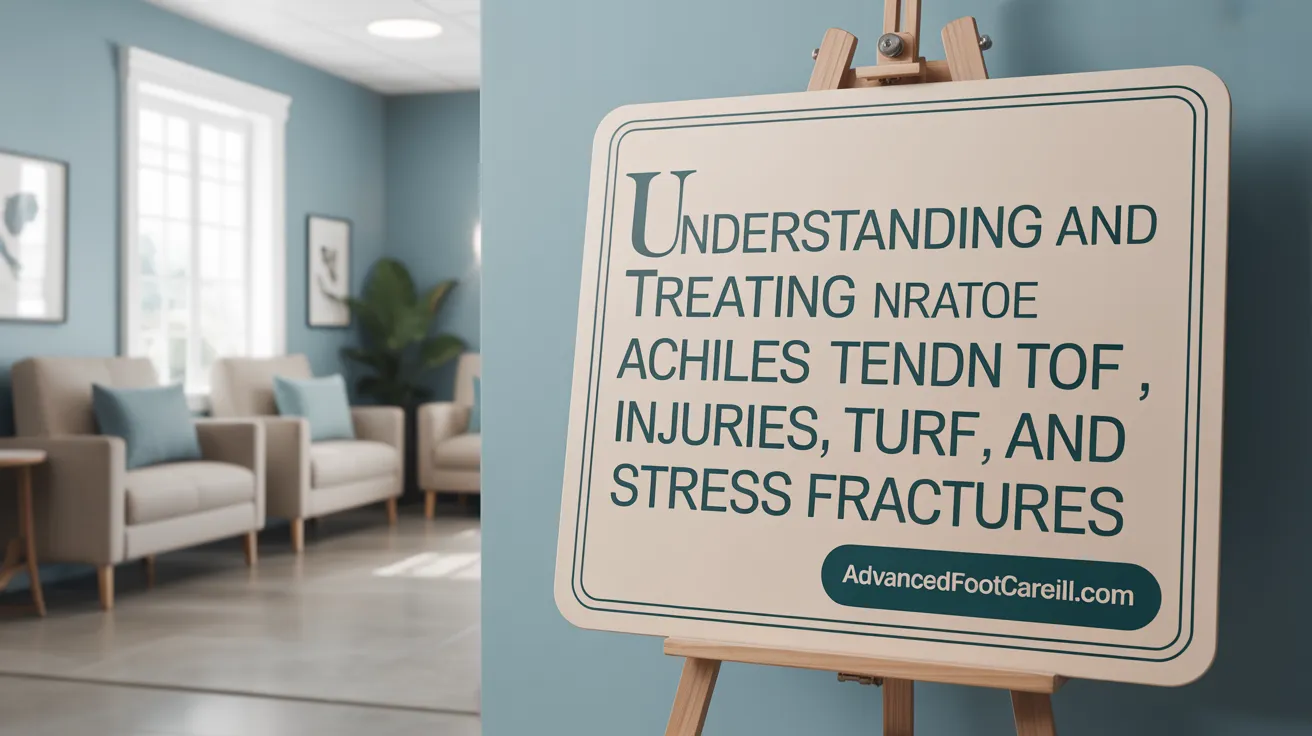
What are key facts about Achilles tendon injuries?
Achilles tendinitis is an overuse injury characterized by pain and inflammation in the Achilles tendon, usually 2 to 6 cm above the heel. It commonly affects runners and athletes involved in jumping sports. Causes include poor flexibility, over-pronation, and changes in footwear or training intensity. Achilles tendon ruptures, on the other hand, occur suddenly from forceful movements, often accompanied by a popping sound and difficulty pointing the foot downward. Treatment varies from conservative approaches like rest, ice, and physical therapy for tendinitis, to surgical repair for complete ruptures. For more details, see Achilles tendon injuries in athletes and Achilles tendon injuries.
What is turf toe and how is it treated?
Turf toe is a sprain of the big toe joint caused by hyperextension, frequently seen in sports requiring quick stops or sudden pushes, especially on artificial turf. Symptoms include pain, swelling, and limited toe motion. Treatment generally involves resting and immobilizing the toe using stiff-soled footwear or taping to limit joint movement. Pain management includes ice and anti-inflammatory medications. Severe injuries, such as large capsular tears, may necessitate surgery. Gradual return to activity with supportive taping is crucial to prevent chronic problems. More information can be found at Turf toe injury and Turf toe injury and treatment.
How do stress fractures occur and how are they managed?
Stress fractures are tiny cracks in bones caused by repetitive high-impact activities that exceed the bone's ability to remodel. They commonly occur in metatarsals and the tibia among runners and gymnasts. Risk factors include sudden increases in training volume, poor nutrition, and inadequate footwear. Management entails rest and sometimes immobilization to allow bone healing. Physical therapy supports recovery by gradually restoring strength and mobility. Athletes should follow a carefully monitored return-to-sport protocol to avoid re-injury. For comprehensive guidance, refer to Stress fractures in athletes and Prevention of foot and ankle injuries.
Long-Term Prevention and Conditioning to Support Foot and Ankle Health
How can athletes maintain foot and ankle health long-term?
Athletes can promote lasting foot and ankle health by engaging in comprehensive conditioning routines. Targeted strengthening exercises focusing on ankle dorsiflexors, evertors, intrinsic foot muscles, and calf muscles bolster joint stability, which helps prevent sprains and strains. For detailed exercise programs, see the Foot and Ankle Conditioning Program.
Maintaining flexibility through regular stretching, especially of the Achilles tendon and calf muscles, reduces tightness that may predispose one to overload injuries like Achilles tendinitis. Guidance on stretching and injury prevention can be found in 8 Simple Ways to Prevent Foot and Ankle Injuries.
Selecting proper footwear tailored to the individual’s foot shape and activity type is crucial. Custom or over-the-counter orthotics can help correct biomechanical irregularities and redistribute pressure across the foot, providing added support and injury prevention. For more information, consult Choosing Proper Athletic Footwear and Footwear and Injury Prevention.
Balance and proprioception training are vital for improving neuromuscular control. These exercises decrease the risk of recurrent ankle sprains by enhancing stability, particularly important for athletes with a history of foot and ankle injuries. See rehabilitation and prevention protocols in Physical Therapy Guidelines for Lateral Ankle Sprain and Prevention of Lateral Ankle Sprains.
Nutrition also plays a supportive role; sufficient intake of vitamin D and other nutrients aids bone health and recovery, as discussed in Proper Nutrition for Bone Health.
Finally, cross-training reduces repetitive stress on the same muscle groups and joints, lowering the chance of overuse injuries. Alternating activities allows muscles and tendons to recover while maintaining overall fitness. Learn more about cross-training benefits in Preventing Foot and Ankle Injuries.
Together, these practices form a robust approach to keeping feet and ankles resilient throughout an athlete's career and beyond.
Empowering Athletes for Safer Performance and Recovery
Foot and ankle injuries pose significant challenges in sports but are largely preventable and manageable with knowledge and the right practices. Through understanding common injuries, implementing effective prevention strategies, timely diagnosis, and structured rehabilitation, athletes can minimize downtime and reduce the risk of lasting damage. Long-term conditioning, proper footwear, and listening to one’s body are essential components of sustaining foot and ankle health. By integrating these principles into training and recovery routines, athletes at all levels can maintain peak performance and enjoy a safer sports experience.
